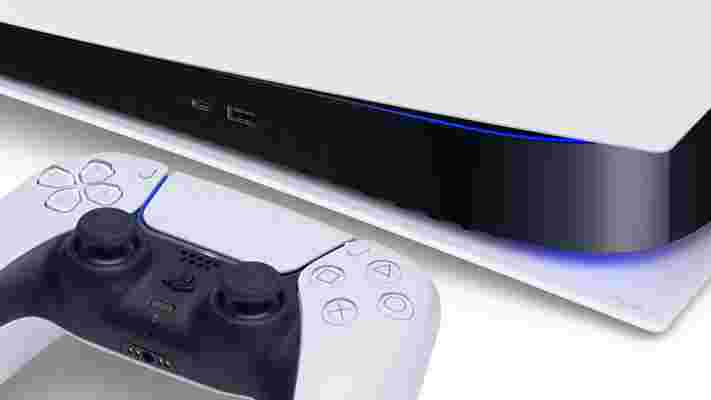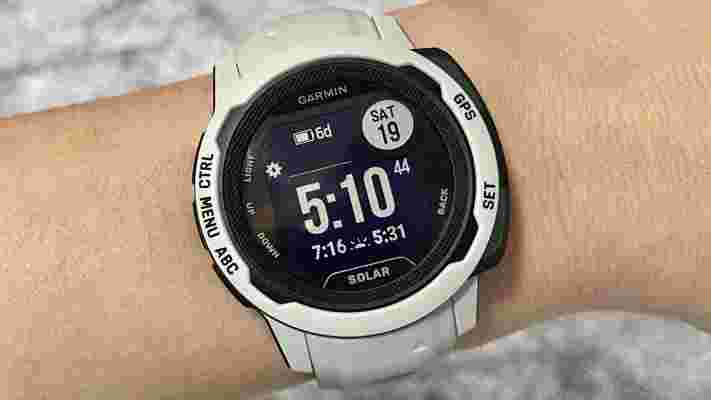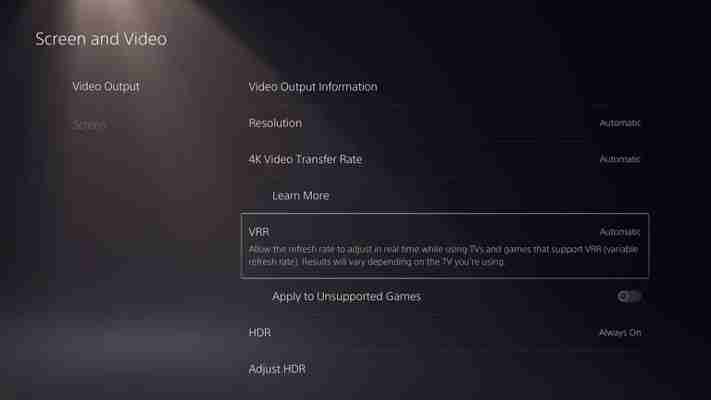Sony will ship fewer PS5 consoles this quarter than it managed to the same time last year.
During Sony’s third-fiscal quarter earnings , the company said its current forecast is to ship two million PS5 units between January and March, which is 1.3 million fewer than Sony shipped during the same quarter last year.
Sony chief financial officer Hiroki Totoki admitted that demand for PS5 remains high and that the company is still facing issues dealing with the ongoing global semiconductor crisis . Totoki expects that component shortages will continue in 2023, but that the impact of the pandemic has mostly been alleviated.
Even though Sony has been unable to get more PS5 consoles in the hands of consumers, the company announced that it has shipped 17.3 million units in total as of December 31, 2021. That’s certainly impressive, but it’s almost three million fewer than the PS4 had shipped during the same period of time on sale.
Analysis: PS5 stock shortages continue to frustrate

Consumers have struggled to find PS5 stock ever since the console was released on November 19, 2020, and it appears that it won’t get any easier to secure Sony’s elusive console for quite some time.
The PS5 has been hit by a perfect storm of high demand, component issues, scalpers , and the pandemic, which has resulted in PlayStation 5 stock being impossibly hard to find. It’s clear that Sony’s bottom line is now suffering, as there are still millions of people who would like to buy a PS5 , but simply can’t.
Stock drops do happen semi-regularly now, but only a limited amount of units are available each time. There’s also a huge surge of demand whenever a retailer announces stock is available, which can lead to thousands missing out if they’re late to the announcement.
After a quiet holiday period, Sony is set to release several high-profile exclusives which will only entice more people to purchase a PS5. Horizon: Forbidden West and Gran Turismo 7 are scheduled to release in February and March respectively, and Sony recently released the Uncharted: Legacy of Thieves Collection .
If you’re searching for a PS5, we’re doing everything we can to help you find Sony’s console in stock.
Garmin Fenix 7 vs Garmin Instinct 2 – choose the right watch for you
If you're in the market for a new sports watch, the Garmin Instinct 2 and Garmin Fenix 7 are two devices that are definitely worth your attention. They're two of the best Garmin watches around – but which one is best for you?
One of the most obvious differences is price – the Fenix 7 is much more expensive than the Instinct 2 – but that doesn't mean that the Fenix is necessarily better for all wearers and activities.
If you're into multiple sports, enjoy competing, and want to train smarter to smash your personal records, the Fenix 7 is likely the best watch for you. It's packed with advanced training tools, and its color display means it's excellent for navigating new routes on foot or by bike.
However, if you're hard on your watches and need something rugged and durable, the Instinct 2 would be a better choice – it's lighter and slimmer than the original Instinct, but still seriously tough, and will shrug off scrapes and knocks. It also has exceptional battery life, particularly if you opt for one of the solar variants.
If you've made your mind up already, we've rounded up the best deals on the Garmin Fenix 7 and Instinct 2 right here. Otherwise, read on to get the full lowdown on these two great multi-sports watches.
Watch models
Neither the Garmin Fenix 7 or the Garmin Instinct 2 is an individual watch – they're whole series with a range of different sizes and specifications, including standard and solar models. To make them easier to compare, we've put together tables showing the various specs and features of both ranges.
The Instinct 2 comes in two case sizes (40mm and 45mm), and is available in both standard and solar editions, the latter of which have photovoltaic cells to keep the battery topped up between charges. There's a standard version, as well as various special editions with additional features to suit specific activities.
| Edition | 45mm case | 40mm case | Standard glass | Solar glass |
|---|---|---|---|---|
| Instinct 2 | Yes | Yes | Yes | Yes |
| Instinct 2 Surf | Yes | Yes | Yes | Yes |
| Instinct 2 Tactical | Yes | No | No | Yes |
| Instinct 2 Camo | Yes | No | Yes | No |
| Instinct 2 Dezl | Yes | No | Yes | No |
The Fenix 7 comes in three sizes (42mm, 47mm, and 51mm), and comes with either standard glass covering the face, solar glass, or sapphire solar crystal, which is tougher and more resistant to scratches. It's worth noting that the 51mm Fenix 7X only comes in sapphire solar or solar variants.
| Edition | Standard glass | Solar glass | Sapphire solar crystal |
|---|---|---|---|
| Fenix 7S | Yes | Yes | Yes |
| Fenix 7 | Yes | Yes | Yes |
| Fenix 7X | No | Yes | Yes |

Price
The Garmin Fenix 7 is a more expensive watch than the Instinct 2, but the exact price will depend on which model you choose.
The Fenix 7 starts at $699.99 / £599.99 / AU$1,049 for the standard version with either a 42mm or 47mm case. The top-tier Fenix 7X Sapphire Solar is $999.99 / £859.99 / AU$1,499.
The Garmin Instinct 2 starts at $349.99 / £299.99 / AU$549 for the standard non-solar model. The most expensive watch in the line is the Instinct 2 Solar Tactical Edition, which retails at $499.99 / £429.99 / AU$749.
Design
Both the Garmin Fenix 7 and Garmin Instinct have tough fiber-reinforced resin cases, and come fitted with a soft silicone strap as standard (with a quick-release mechanism so you can easily swap it for something different).
The Fenix 7, however, has a smarter look thanks to a brushed metal layer covering the bezel and lugs. The 47mm and 52mm versions also have external screws on the lugs, while the 42mm model has a more minimalist look with internal fixings.
As mentioned above, the Fenix 7 comes with a choice of three case sizes, while the Instinct 2 has two.

Display
Both the Garmin Fenix 7 and Instinct 2 have memory-in-pixel displays, which aren't as bright as OLED and have a slower refresh rate, but use less power which results in longer battery life.
The Fenix 7 has a color touchscreen display, which means it works well for displaying graphs, charts and maps. If you're looking for a watch that will help you navigate new running, cycling, or walking routes, it's a solid choice. The blue backlight does muddy the colors a little though.
The Instinct 2 has a monochrome screen, with a small cutout that can show useful stats like your current calorie burn or step count, and displays useful contextual information as you're navigating through menus. It's even more efficient than the Fenix 7's display, but it also has a lower resolution. Although you can upload routes to the Instinct 2, following them is difficult due to the lack of detail.
The Instinct 2's display isn't touch-sensitive; instead, all watch operations are carried out using the buttons around the edge of the case.

Battery life
All Fenix and Instinct watches have excellent battery life, but the Instinct 2 has the edge – particularly if you opt for one of the solar models. In fact, Garmin claims you could get indefinite battery life in smartwatch mode if you give your watch sufficient sunlight (the company gave the example of a lifeguard working at a beach). Even if you're not soaking up the sun all day, you can still expect battery life that runs into weeks rather than hours or days.
As with any sports watch, using features like GPS, music playback, and SpO2 tracking will use more power and reduce battery life.
This table shows Garmin's maximum battery life figures for the standard 47mm Fenix 7 and Fenix 7 Solar, plus the standard 45mm Instinct 2 and Instinct 2 Solar.
| Mode | Fenix 7 | Fenix 7 Solar | Instinct 2 | Instinct 2 Solar |
|---|---|---|---|---|
| Smartwatch | 18 days | 22 days | 28 days | Unlimited |
| Battery saver smartwatch | 57 days | 173 days | 65 days | Unlimited |
| GPS | 57 hours | 73 hours | 30 hours | 48 hours |
| Max battery GPS | 136 hours | 289 hours | 70 hours | 370 hours |
Larger watches have longer battery life due to their biggest batteries (and solar cells), while smaller models have shorter battery life.
Smartwatch features
In terms of everyday smartwatch features, the Garmin Fenix 7 has the edge over the Instinct 2. Both watches will display app, text, and call notifications on your wrist, allow you to reject calls with a text message if you're an Android phone user, and let you control music playback on your phone. They also let you see your calendar, and provide weather forecasts on your wrist.
However, the Fenix 7 also has on-board storage for music (the exact amount varies depending on which model you choose), plus Garmin Pay for making contactless purchases. You can also use Garmin Pay on various public transport networks.
It's worth noting that neither watch has a microphone for taking calls or using your phone's voice assistant. For that, you'll need the Garmin Venu 2 Plus .
Fitness tracking
Both the Instinct 2 and Fenix 7 are excellent sports watches, with a huge range of sports tracking profiles (particularly for runners, swimmers, and cyclists), and multi-sports modes so you don't have to stop tracking during events that include more than one discipline.
The Fenix 7 also has a host of extra training tools to help you monitor your fitness and see the results of your workouts. These include training load focus, training effect (aerobic or anaerobic), and training load over the last seven days with guidance on whether you're maintaining your current fitness level, improving, peaking, or detraining. You also get a real-time stamina monitor, which shows how much energy you have remaining for the rest of your workout and help you judge whether you can afford to push harder, or need to dial back a little to avoid getting over-tired.
Cyclists will benefit from a cycling-specific street map (with popularity ratings for routes), and compatibility with Varia radar systems. Swimmers can log drills, get pacing alerts, and record their critical swim speed .
The Fenix 7 also has on-screen workout animations to guide you through yoga and pilates sessions
Whichever watch you choose, you'll also get Garmin's all-day heart monitoring with abnormal heart rate alerts, stress tracking, and Body Battery monitor, which shows how much energy you have to tackle the day ahead (and how it drops during the day based on activity and stress).
You'll also get sleep monitoring, with a sleep score each morning, a breakdown of sleep stage, and tips on how to sleep better in future. Both watches also have an SpO2 monitor, which can track blood oxygen saturation constantly, just throughout the night, or via spot checks.
New PS5 update sneakily adds an Xbox Series X feature
The latest PS5 update, which rolled out to all users on March 23, includes a hidden Xbox Series X feature that wasn’t highlighted in Sony’s original patch notes: auto low latency mode (ALLM).
If you’re not aware of what ALLM is exactly, it’s a TV technology that prompts your display to automatically switch to Game Mode when your console begins playing a game. The feature has been available on Xbox Series X and Xbox Series S since launch and has now been added to PS5 .
Vincent Teogh of HDTVTest confirmed ALLM was active after the latest PS5 update using a Sony X900H. I can also confirm that ALLM is also working on my LG OLED CX .
ALLM might not sound like much for those who already pick the appropriate picture setting when playing games, but it’s a handy feature for those who aren’t accustomed to or comfortable with adjusting their TV settings.
The benefit of ALLM also ensures that you’re always using the optimal picture setting on your TV when playing games, which will provide a more responsive experience as game modes tend to offer significantly reduced input lag albeit at the expense of some picture options.
Analysis: PS5 is closing the gap when it comes to display features

It’s a little odd that Sony didn’t note that ALLM was part of PS5’s latest update , as along with VRR support – which has been confirmed to arrive “in the months ahead” – it’s a desirable feature on modern-day consoles.
Until now, both features were exclusive to Xbox Series X|S, so it’s certainly a win for PS5 gamers to have parity with Microsoft’s new systems.
However, there’s still one big omission that some PS5 owners will be hoping to see, and that’s 1440p support . Right now, if you plug a PS5 into a 1440p display the console can only output at 1080p with downsampling.
That means gamers are missing out on 43.75% more detail than they should be, and with 1440p monitors being one of the most adopted display resolutions out there, it’s a big oversight from Sony that the PS5 can’t natively output games at this resolution.
What makes the problem more egregious is that Xbox consoles have had 1440p support since 2018, along with VRR. It’s taken four years for VRR to come to PS5 , so surely the wait for 1440p will soon be over as well? Maybe not. Sony has previously said that it wants to “prioritize support for TVs”, which when VRR arrives, you could argue the company has accomplished. Still, we hope Sony doesn't forget that not everyone plays games on a TV.